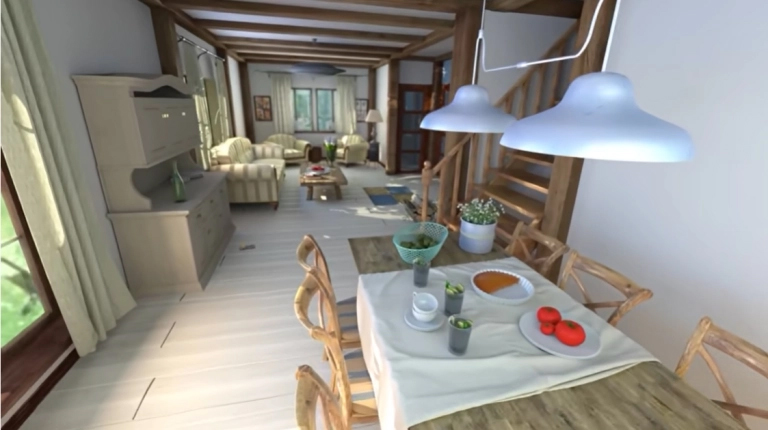Over the past few years, I have been watching a lot of cartoons with my 4-year-old daughter and I have noticed that the art of animation has changed a lot. As an architect and design blogger, I couldn't help but notice that some of the interior spaces in the cartoons seem to have been taken out of architecture magazines, or even professionally designed by architects and interior designers. Glossy materials, designer furniture, modern lighting, and minimalist aesthetics are just some of the contemporary design elements seen in animation today.
Today's children's 3d animations often portray living spaces designed with aesthetics in mind. Is it possible that the animation industry has created a new profession in designing and architecting? Perhaps in a few years, an architect or designer will be a required member of the larger team working on an animation project. After all, architects and interior designers are among the first to adopt 3D software for modeling and rendering their architecture drawings, even making video fly-throughs. The 3D digital drawing has also seen a revolution in recent years with the introduction of software like SketchUp, Blender, 3DS Max, Cinema4D and much more. This powerful digital tools, some of them free, enable designers to create three dimensional photorealistic images of their concepts. Most colleges in the world offer courses in digital drawing and 3D modeling and rendering.
This thought occurred to me while watching Booba, an animated series in which the main character is an anthropomorphic animal. The houses in which the hero lives are well-designed, with modern materials, carefully chosen colors and furnishings. One has to wonder if the production team consulted an architect to design the show's 3D scenery, which ranges from airports to gyms to lofts to old single-family homes.

Screenshot of the TV animation series, Booba. Τhe setting seems to have been created by an interior decorator.
Although I know nothing about the intricacies of anime production, I do know that in the past, it was made by hand. Artists had to manually hand-draw and hand-paint hundreds of frames by themselves. The effect of animation was achieved by rapidly alternating drawn images one after the other. With the development of 3D design technology, animation changed radically. Now artists no longer have to draw individual images by hand but model entire new worlds for the characters to live in.

Screenshot of the TV animation series, Booba.
The characters are not drawn as 2D figures, but as 3D figures that can be rotated or have motion added. As a result, the setting is also constructed to be three-dimensional in which the viewer can navigate around: enter and exit a room, turn around a building, run down a street. Additional elements can then be added, such as trees and cars, furniture, lamps and decorative elements. Surfaces can take the form of any material to make them look more realistic. A floor for example can look like a wooden parquet, a ceramic tile or a slate stone.
3D animation technology is really powerful. Objects in 3d animation can cast shadows on other surfaces, and not just from one light source but from multiple light sources. Materials, such as marble, metal, glass or glazed tile can have reflections which can make the image much more realistic.

Screenshot of the TV animation series, Booba. The wooden floor and the light blue color on the walls seem to have been chosen by a professional decorator.
However, all these technological capabilities of 3D animation do not necessarily mean that they produce higher-quality animations. In fact, many people observe that the older technology of hand-drawn animation was much better aesthetically. For example, who hasn’t been enthralled by Hayao Miyazaki’s work? Even though he has employed computer-generated imagery in his later work, his films are still 2D.

Screenshot of the TV animation series, Booba. Several elements in the bedroom add style: the brick wall behind the bed, the bicycle, the standing mirror in the corner.
I believe that the technological capabilities of 3D animation have significantly altered the art of animation, not only in the process of creation but also in terms of aesthetics. Watching several children’s animations with my daughter on YouTube, I noticed that interior spaces in some shows are now intricately designed with more detail on materials and architecture elements than in the past.

Screenshot of the TV animation series, Booba. 3D animation technology has simplified some effects such as reflection of images and shadow casting.
It appears that the scenery – buildings, interior spaces, and landscapes – in today’s animations is designed not by artists who are only familiar with 3D software, but by artists who are interested in architecture and home decoration. Everything seems perfectly designed: the materials, the furniture, the colors, and the decorative elements. Contemporary animators appear to have embraced an essence for architecture and modern design.
| < Prev | Next > |
|---|


